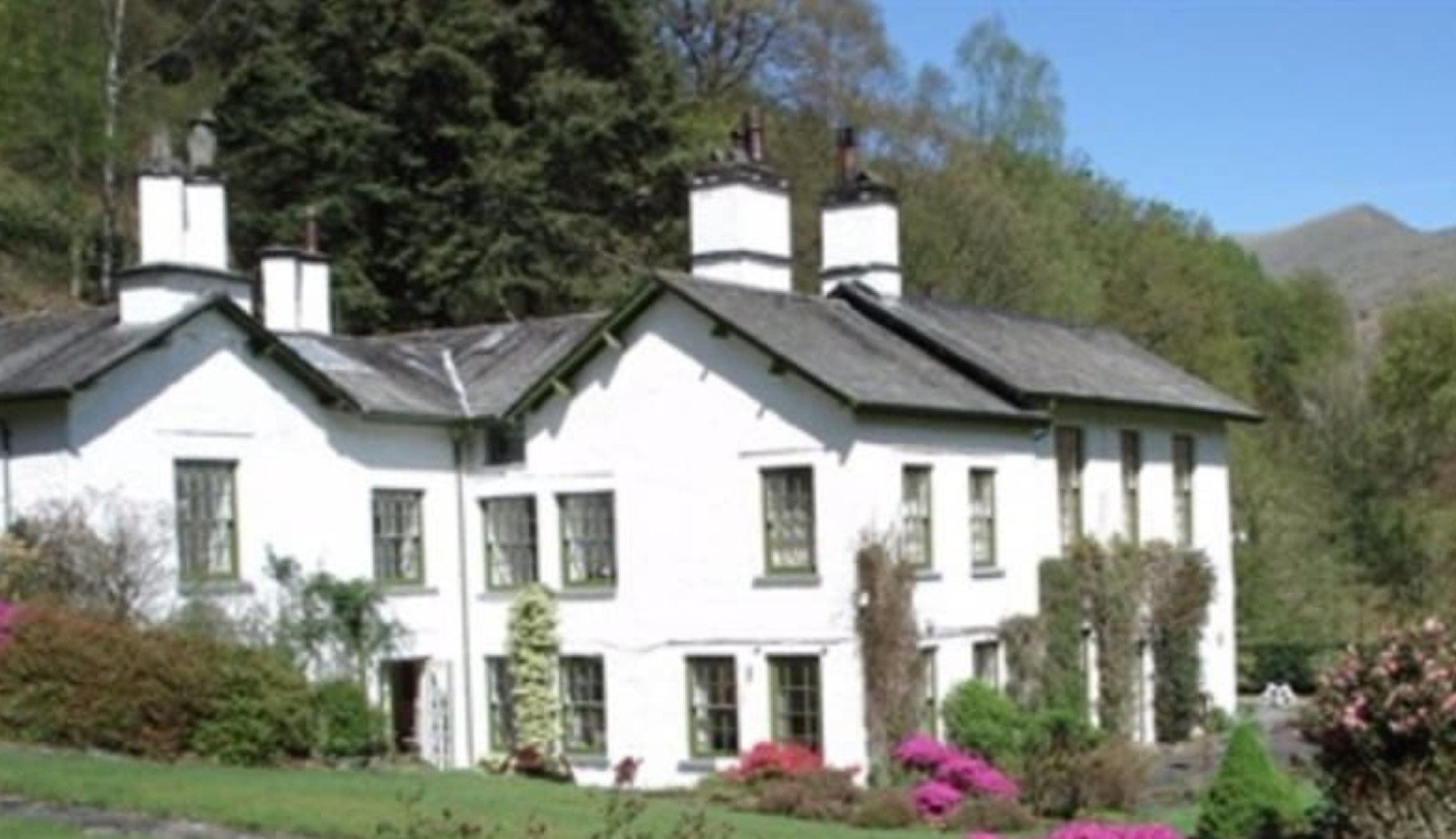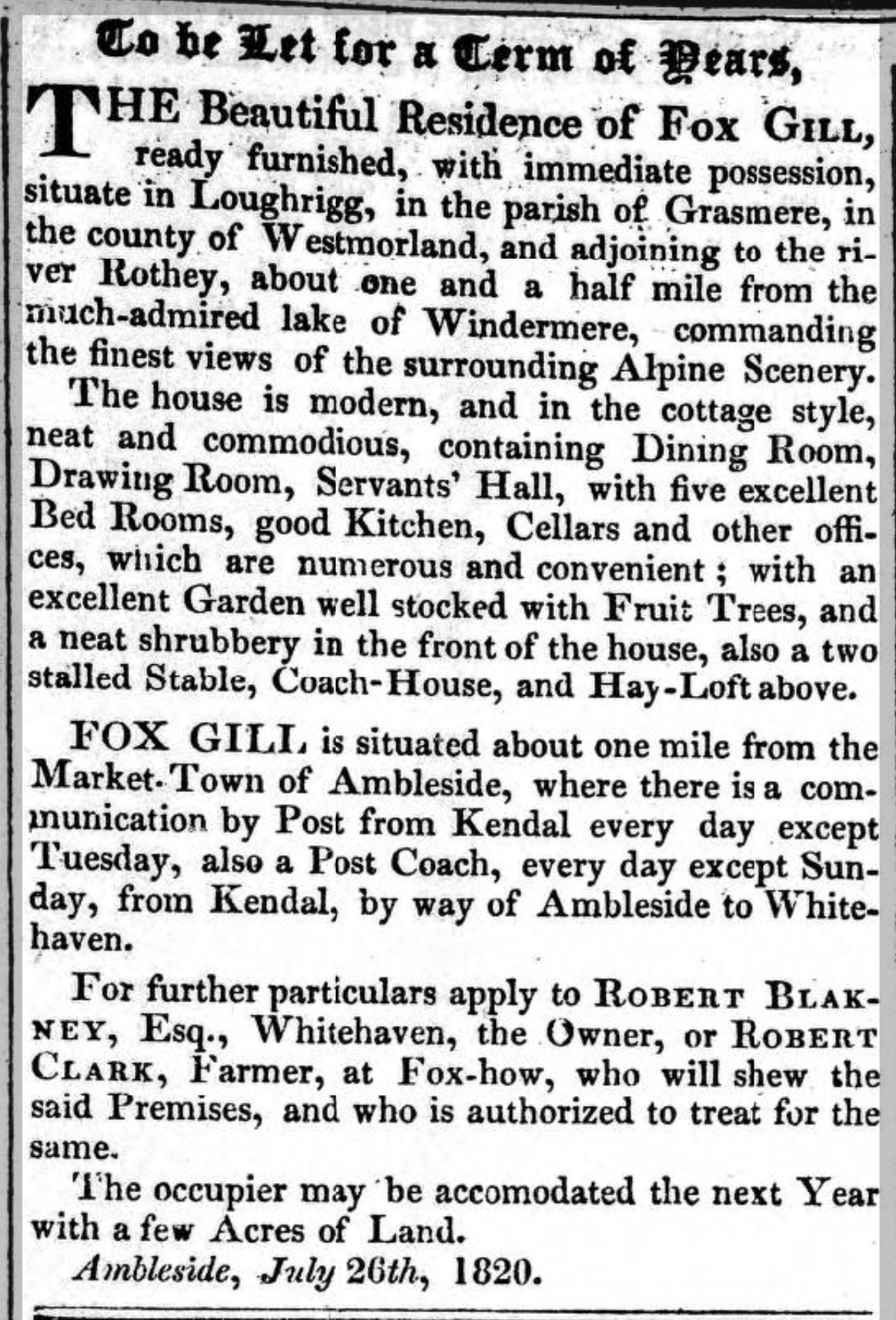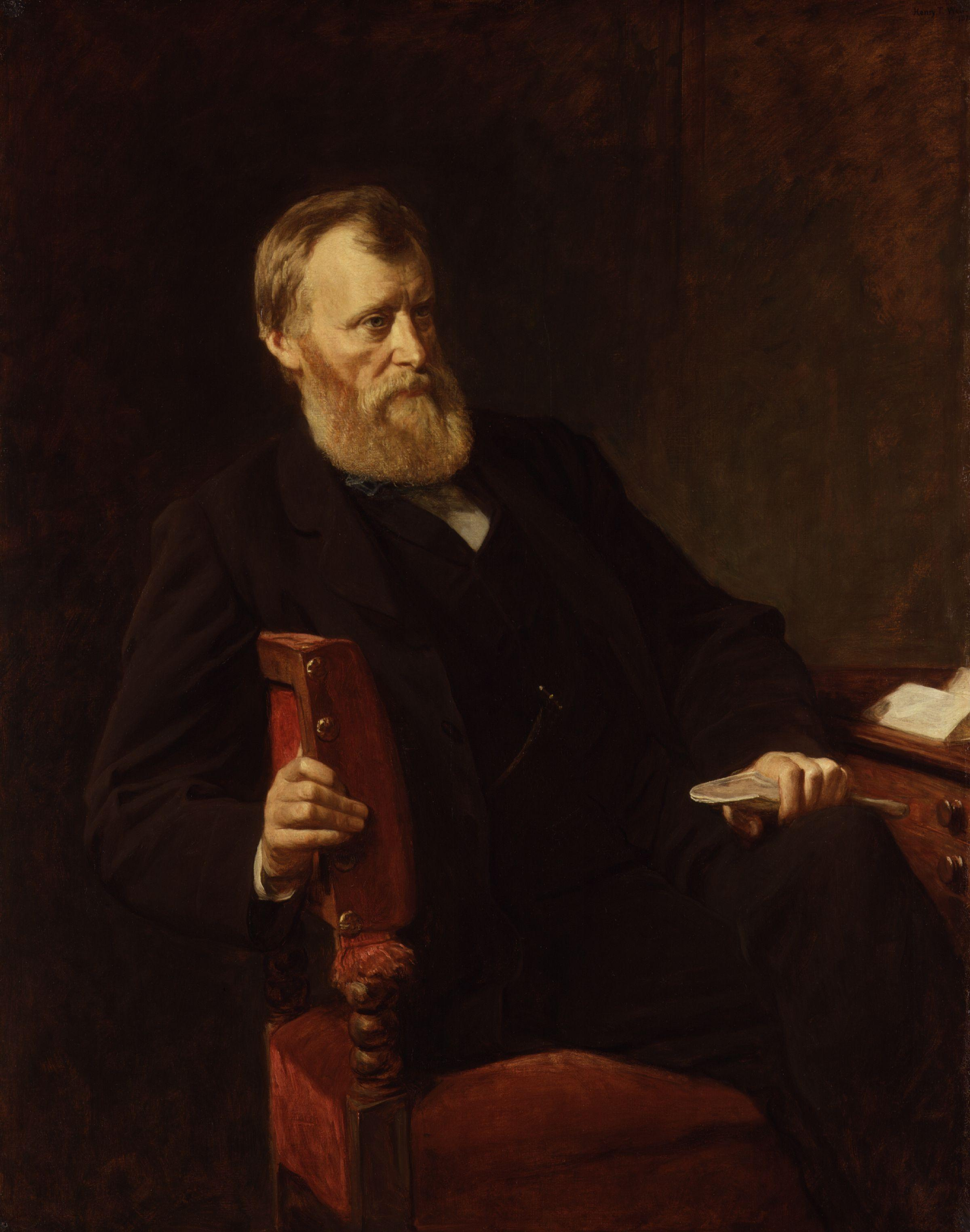Fox Ghyll on:
[Wikipedia]
[Google]
[Amazon]
 Fox Ghyll or Foxghyll, earlier Fox Gill, is a historic house near
Fox Ghyll or Foxghyll, earlier Fox Gill, is a historic house near

 Robert Blakeney (1758-1822) appears to have made substantial alterations and additions in the early 1800s to an existing much older house which was on the site. At this time the house was called Fox Gill. Robert was a friend of
Robert Blakeney (1758-1822) appears to have made substantial alterations and additions in the early 1800s to an existing much older house which was on the site. At this time the house was called Fox Gill. Robert was a friend of
 After Hornby died in 1859 the house was let for some time and in about 1870 it was bought by
After Hornby died in 1859 the house was let for some time and in about 1870 it was bought by
 Fox Ghyll or Foxghyll, earlier Fox Gill, is a historic house near
Fox Ghyll or Foxghyll, earlier Fox Gill, is a historic house near Ambleside
Ambleside is a town and former civil parish, now in the parish of Lakes, in Cumbria, in North West England.
Historically in Westmorland, it marks the head (and sits on the east side of the northern headwater) of Windermere, England's larges ...
in Cumbria
Cumbria ( ) is a ceremonial and non-metropolitan county in North West England, bordering Scotland. The county and Cumbria County Council, its local government, came into existence in 1974 after the passage of the Local Government Act 1972. Cumb ...
, England, and is a Grade II listed building
In the United Kingdom, a listed building or listed structure is one that has been placed on one of the four statutory lists maintained by Historic England in England, Historic Environment Scotland in Scotland, in Wales, and the Northern Irel ...
. It is a Regency
A regent (from Latin : ruling, governing) is a person appointed to govern a state '' pro tempore'' (Latin: 'for the time being') because the monarch is a minor, absent, incapacitated or unable to discharge the powers and duties of the monarchy ...
building which seems to have been added to a much older house that was on the site. It was the home of many notable people including Thomas De Quincey
Thomas Penson De Quincey (; 15 August 17858 December 1859) was an English writer, essayist, and literary critic, best known for his '' Confessions of an English Opium-Eater'' (1821). Many scholars suggest that in publishing this work De Quinc ...
over the next two centuries.
Early residents

 Robert Blakeney (1758-1822) appears to have made substantial alterations and additions in the early 1800s to an existing much older house which was on the site. At this time the house was called Fox Gill. Robert was a friend of
Robert Blakeney (1758-1822) appears to have made substantial alterations and additions in the early 1800s to an existing much older house which was on the site. At this time the house was called Fox Gill. Robert was a friend of William Wordsworth
William Wordsworth (7 April 177023 April 1850) was an English Romantic poet who, with Samuel Taylor Coleridge, helped to launch the Romantic Age in English literature with their joint publication ''Lyrical Ballads'' (1798).
Wordsworth's ' ...
who lived in the nearby house Rydal Mount
Rydal Mount is a house in the small village of Rydal, near Ambleside in the English Lake District. It is best known as the home of the poet William Wordsworth from 1813 to his death in 1850. It is currently operated as a writer's home museu ...
and in 1814 Wordsworth wrote to him mentioning the windows in the house he was building. Robert was a wealthy property owner who came from Whitehaven. He was the son of Captain George Augustus Blakeney and in 1780 married Elizabeth Burrows. His second wife was Margaret Edwards who he married in 1814. In 1820 he decided to rent the house and he placed an advertisement in ''The Westmorland Gazette
''The Westmorland Gazette'' is a weekly newspaper published in Kendal, England, covering " South Lakeland and surrounding areas", including Barrow and North Lancashire. Its name refers to the historic county of Westmorland. The paper is now owned ...
'' which is shown.
The person who responded to the advertisement was Thomas De Quincey
Thomas Penson De Quincey (; 15 August 17858 December 1859) was an English writer, essayist, and literary critic, best known for his '' Confessions of an English Opium-Eater'' (1821). Many scholars suggest that in publishing this work De Quinc ...
, a struggling writer who was briefly editor of ''The Westmorland Gazette''. He rented the house for his growing family from 1820 until 1825. It has been claimed that it was at Fox Ghyll that he wrote “Confessions of an English Opium-Eater
''Confessions of an English Opium-Eater'' (1821) is an autobiographical account written by Thomas De Quincey, about his laudanum addiction and its effect on his life. The ''Confessions'' was "the first major work De Quincey published and the one ...
” which appeared anonymously in 1821. However, it is generally agreed that he finished this autobiographical work during a stay in Tavistock Street
Tavistock Street is a street in the Covent Garden area of London which runs parallel to the Strand between Drury Lane and Southampton Street just south of the market piazza.
History
Initially, the street was a passageway between Wellington and C ...
in London.
In 1825 Mrs Letitia Luff, a friend of William Wordsworth
William Wordsworth (7 April 177023 April 1850) was an English Romantic poet who, with Samuel Taylor Coleridge, helped to launch the Romantic Age in English literature with their joint publication ''Lyrical Ballads'' (1798).
Wordsworth's ' ...
and his family bought Fox Ghyll. She was the widow of Charles Luff, an old resident of Patterdale
Patterdale (Saint Patrick's Dale) is a small village and civil parish in the eastern part of the English Lake District in the Eden District of Cumbria, in the traditional county of Westmorland, and the long valley in which they are found, also ...
, who had died in Mauritius
Mauritius ( ; french: Maurice, link=no ; mfe, label=Mauritian Creole, Moris ), officially the Republic of Mauritius, is an island nation in the Indian Ocean about off the southeast coast of the African continent, east of Madagascar. It incl ...
in 1815. The Wordsworths made many visits to her at the house and in 1831 Dora Wordsworth
Dorothy "Dora" Wordsworth (16 August 1804 – 9 July 1847) was the daughter of poet William Wordsworth (1770–1850) and his wife Mary Hutchinson. Her infancy inspired William Wordsworth to write "Address to My Infant Daughter" in her honour. ...
, who was the daughter of William made a sketch of Fox Ghyll which is shown.
The tithe map The term tithe map is usually applied to a map of an English or Welsh parish or township, prepared following the Tithe Commutation Act 1836. This act allowed tithes to be paid in cash rather than goods. The map and its accompanying schedule gave ...
of Rydal shows that by 1838 Hornby Roughsedge (1782-1859) was the owner and occupier of Fox Ghyll. He was a wealthy landowner from Bentham and became a magistrate for Westmorland. He and his wife Margaret Hodgson (1793-1867) lived in the house until Hornby’s death in 1859. Their daughter Elizabeth also lived with them until her marriage in 1841.
Later residents
 After Hornby died in 1859 the house was let for some time and in about 1870 it was bought by
After Hornby died in 1859 the house was let for some time and in about 1870 it was bought by William Edward Forster
William Edward Forster, PC, FRS (11 July 18185 April 1886) was an English industrialist, philanthropist and Liberal Party statesman. His supposed advocacy of the Irish Constabulary's use of lethal force against the National Land League ea ...
(1818-1886) who made major additions to the building. He was a notable politician who introduced an important Education Act
Education Act (with its variations) is a stock short title used for legislation in Australia, Hong Kong, India, Malaysia, New Zealand, the United Kingdom and the United States that relates to education. The Bill for an Act with this short title wil ...
. He was born in 1818 at Bradpole
Bradpole is a village and civil parish in south west Dorset, England, in the Brit valley, outside Bridport. In the 2011 census the population of the parish was 2,339.
In 1651 Charles II passed through Bradpole in his efforts to evade captur ...
in Dorset
Dorset ( ; archaically: Dorsetshire , ) is a county in South West England on the English Channel coast. The ceremonial county comprises the unitary authority areas of Bournemouth, Christchurch and Poole and Dorset (unitary authority), Dors ...
. His father was William Forster who was famous for his work in abolishing slavery and his mother was Anna Buxton, a friend of Elizabeth Fry
Elizabeth Fry (née Gurney; 21 May 1780 – 12 October 1845), sometimes referred to as Betsy Fry, was an English prison reformer, social reformer, philanthropist and Quaker. Fry was a major driving force behind new legislation to improve the tr ...
.
In 1850 he married Jane Arnold who was the daughter of Thomas Arnold
Thomas Arnold (13 June 1795 – 12 June 1842) was an English educator and historian. He was an early supporter of the Broad Church Anglican movement. As headmaster of Rugby School from 1828 to 1841, he introduced several reforms that were wide ...
, an educator and historian who lived at Fox How which is near Fox Ghyll. She was also the sister of Matthew Arnold
Matthew Arnold (24 December 1822 – 15 April 1888) was an English poet and cultural critic who worked as an inspector of schools. He was the son of Thomas Arnold, the celebrated headmaster of Rugby School, and brother to both Tom Arnold, lite ...
the famous poet who inherited the neighbouring Fox How house. William and Jane had no children of their own but adopted four children of Jane's brother William Arnold after he died in 1859. Two of them later became famous. Hugh Arnold Forster who was a politician and writer and Florence Arnold Forster who wrote a diary in which she mentions Fox Ghyll.
Forster's biographer Thomas Wemyss Reid
Sir Thomas Wemyss Reid (29 March 1842 – 26 February 1905) was an English newspaper editor, novelist and biographer.
Early life
Reid was born at Newcastle upon Tyne in 1842, the son of a Congregational minister
Career
He became chief reporte ...
describes the love that Forster had for Fox Ghyll. He said:
William died in 1886 and left all of his property to his wife Jane. She owned the house until her death in 1899 and it was then sold to the Elletson sisters.
Emily and Margaret Elletson were maiden ladies who had inherited property in Pilling
Pilling is a village and civil parish within the Wyre borough of Lancashire, England. It is north-northeast of Poulton-le-Fylde, south-southwest of Lancaster and northwest of Preston, in a part of the Fylde known as Over Wyre.
The ci ...
. They were the daughters of Daniel Elletson (1806-1856) of Parrox Hall, Preesall
Preesall is a town, civil parish and electoral ward in Lancashire, England. The parish (until 1910 known as Preesall with Hackensall) covers the eastern bank of the estuary of the River Wyre, including Knott End-on-Sea, Pilling Lane and the vi ...
. The sisters are listed in both the 1901 and 1911 Census as living at Fox Ghyll with three servants. Margaret died in 1921 and Emily in 1928.
In 1939 Gladys Mary Barber (1888-1947), a widow bought Fox Ghyll. She lived there until her death in 1947. From 1958 until 1965 James Peter Blackledge lived at the house and then moved to Cote How in Ambleside.
Fox Ghyll is a residence which provides bed and breakfast
Bed and breakfast (typically shortened to B&B or BnB) is a small lodging establishment that offers overnight accommodation and breakfast. Bed and breakfasts are often private family homes and typically have between four and eleven rooms, wit ...
accommodation under the name Foxghyll (or FoxGhyll) Country House.
References
{{coord, 54.4375, -2.9833, type:landmark_region:GB, display=title Hotels in Cumbria Ambleside Grade II listed houses in Cumbria